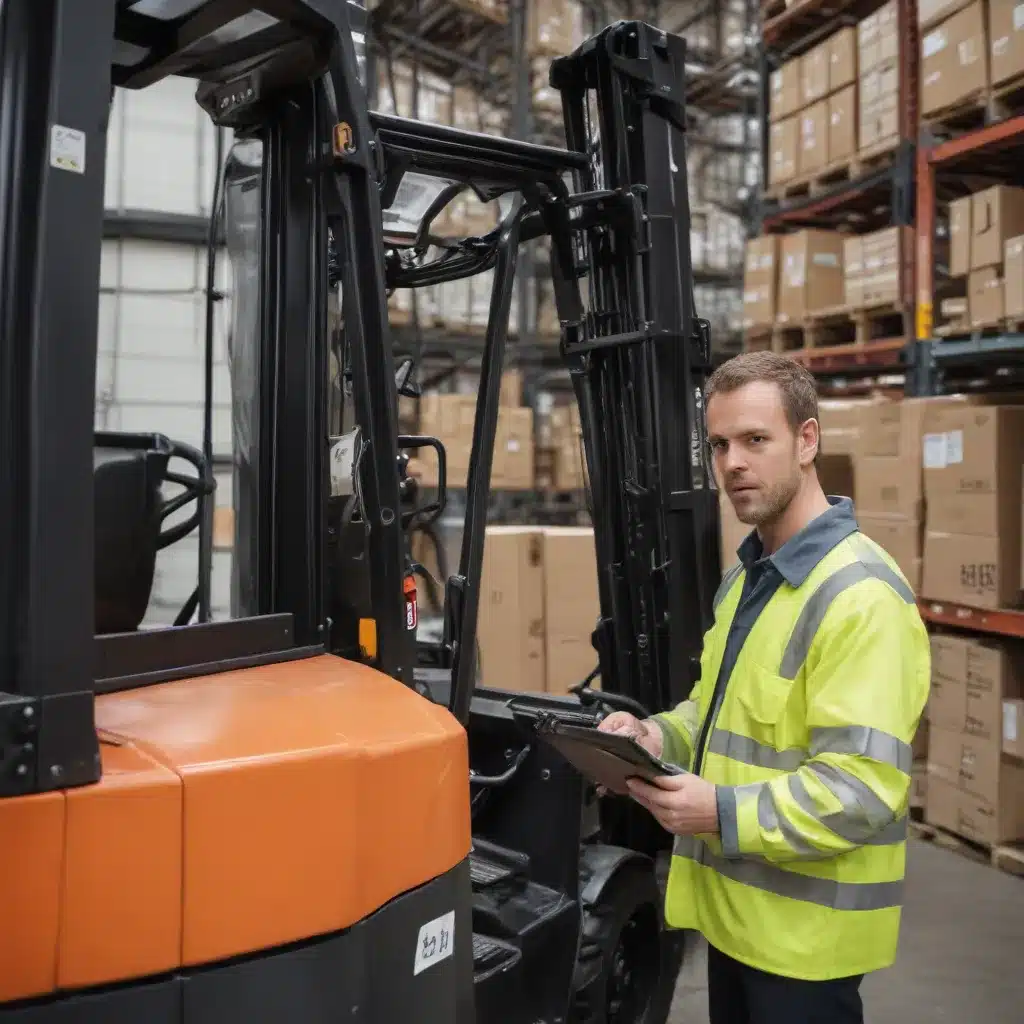
The Rise of Predictive Maintenance
In today’s fast-paced, highly competitive material handling and logistics industries, maximizing forklift uptime is critical for maintaining operational efficiency and profitability. While preventive maintenance has long been the go-to strategy for keeping forklifts running smoothly, the emergence of cutting-edge predictive maintenance technologies is revolutionizing the way organizations approach equipment management.
Preventive maintenance, with its regularly scheduled inspections and servicing, has proven effective in prolonging asset life and reducing breakdowns. However, as facilities scale up operations to meet rising demand, the limitations of this time-based approach become increasingly apparent. Unexpected downtime, unplanned repairs, and suboptimal resource allocation can quickly erode the bottom line.
Enter predictive maintenance – a data-driven strategy that leverages advanced sensors, connectivity, and artificial intelligence (AI) to anticipate equipment failures before they occur. By continuously monitoring critical forklift components and performance metrics, predictive maintenance systems can identify emerging issues and recommend the optimal time for maintenance interventions. This proactive approach not only minimizes downtime but also optimizes parts inventory, labor scheduling, and overall maintenance costs.
Key Factors for Successful Predictive Maintenance
Transitioning from a preventive to a predictive maintenance model requires careful planning and implementation. Here are the four key factors to consider when establishing a successful predictive maintenance program for your forklift fleet:
1. Digital Data Collection and Integration
“If you’ve already optimized your preventative maintenance, you’ll have almost everything you need in place already.”
The foundation of any effective predictive maintenance strategy is a robust data collection and management infrastructure. This begins with digitizing your existing preventive maintenance records and integrating them with real-time telematics data from your forklift fleet. By capturing equipment usage, performance, and diagnostic information, you can build a comprehensive dataset to feed your predictive maintenance algorithms.
2. Streamlined Repair Processes
“You can only build a strong predictive maintenance system if you have a smoothly operating repair system based on repair orders and parts.”
Predictive maintenance relies on your ability to respond quickly and efficiently to identified maintenance needs. This requires a well-oiled repair system, with technicians focused on proactive prevention rather than reactive firefighting. Streamlining work order management, parts inventory, and technician skill development are crucial steps in this transformation.
3. Robust Telematics Data Capture
“Telematics, a term that’s a mashup of “telecommunications” and “informatics”, is crucial for predictive maintenance success.”
Leveraging telematics technology is essential for gathering the real-time data required to power predictive maintenance models. Forklift-mounted sensors, combined with remote data transmission and analysis capabilities, provide the granular insights needed to anticipate maintenance requirements. However, this also means investing in technicians skilled in interpreting and acting on this data.
4. AI-Powered Decision Support
“Here’s where the AI part comes in to govern the “predictive” part of maintenance.”
The final piece of the puzzle is an artificial intelligence-driven decision support system. By applying advanced analytics and machine learning algorithms to your comprehensive equipment data, this system can identify patterns, detect anomalies, and recommend optimal maintenance interventions. Over time, as the system “learns” from the outcomes of its predictions, it will continuously refine its accuracy and enhance the effectiveness of your predictive maintenance program.
Overcoming the Challenges of Adoption
Implementing a predictive maintenance program for your forklift fleet is no small feat. The integration of new technologies, processes, and skillsets can be daunting, especially for organizations already stretched thin by day-to-day operations. However, there are several strategies to help navigate this transition:
-
Leverage a Maintenance Partner: Consider partnering with a specialized service provider that can bring in an experienced on-site maintenance team, complete with the necessary data platforms and service processes to drive predictive maintenance from the start.
-
Start Small with a Pilot Program: Begin by testing predictive maintenance on a single forklift model or at a single facility. This allows you to work out the kinks and prepare for a larger-scale rollout.
-
Adopt a Third-Party Telematics Solution: If you have the resources, consider implementing a turnkey telematics platform provided by a trusted vendor. This can accelerate the adoption of predictive maintenance while minimizing the need for in-house expertise.
Whichever path you choose, the key is to approach predictive maintenance as a strategic, long-term investment in the reliability and efficiency of your forklift fleet. With the right plan and a commitment to continuous improvement, you can unlock the transformative benefits of this cutting-edge maintenance approach.
Maximizing Forklift Uptime Through Predictive Maintenance
As the material handling and logistics industries continue to demand ever-increasing levels of productivity and responsiveness, the ability to maintain uninterrupted forklift operations becomes a crucial competitive advantage. By embracing predictive maintenance strategies powered by data, connectivity, and AI, organizations can take their equipment management to new heights, driving down costs, boosting uptime, and positioning themselves for long-term success.
To learn more about how predictive maintenance can transform your forklift operations, visit Forklift Reviews today. Our team of seasoned industry experts is ready to guide you through the process of implementing a data-driven maintenance program tailored to your unique business needs.
Key Takeaways
- Preventive maintenance has limitations in scaling with growing operational demands, leading to the rise of predictive maintenance.
- Successful predictive maintenance programs rely on four critical factors: digital data collection, streamlined repair processes, robust telematics, and AI-powered decision support.
- Overcoming the challenges of predictive maintenance adoption requires innovative strategies, such as leveraging maintenance partners, piloting programs, and adopting third-party telematics solutions.
- Embracing predictive maintenance can unlock transformative benefits for forklift fleets, including reduced costs, increased uptime, and improved competitive positioning.

